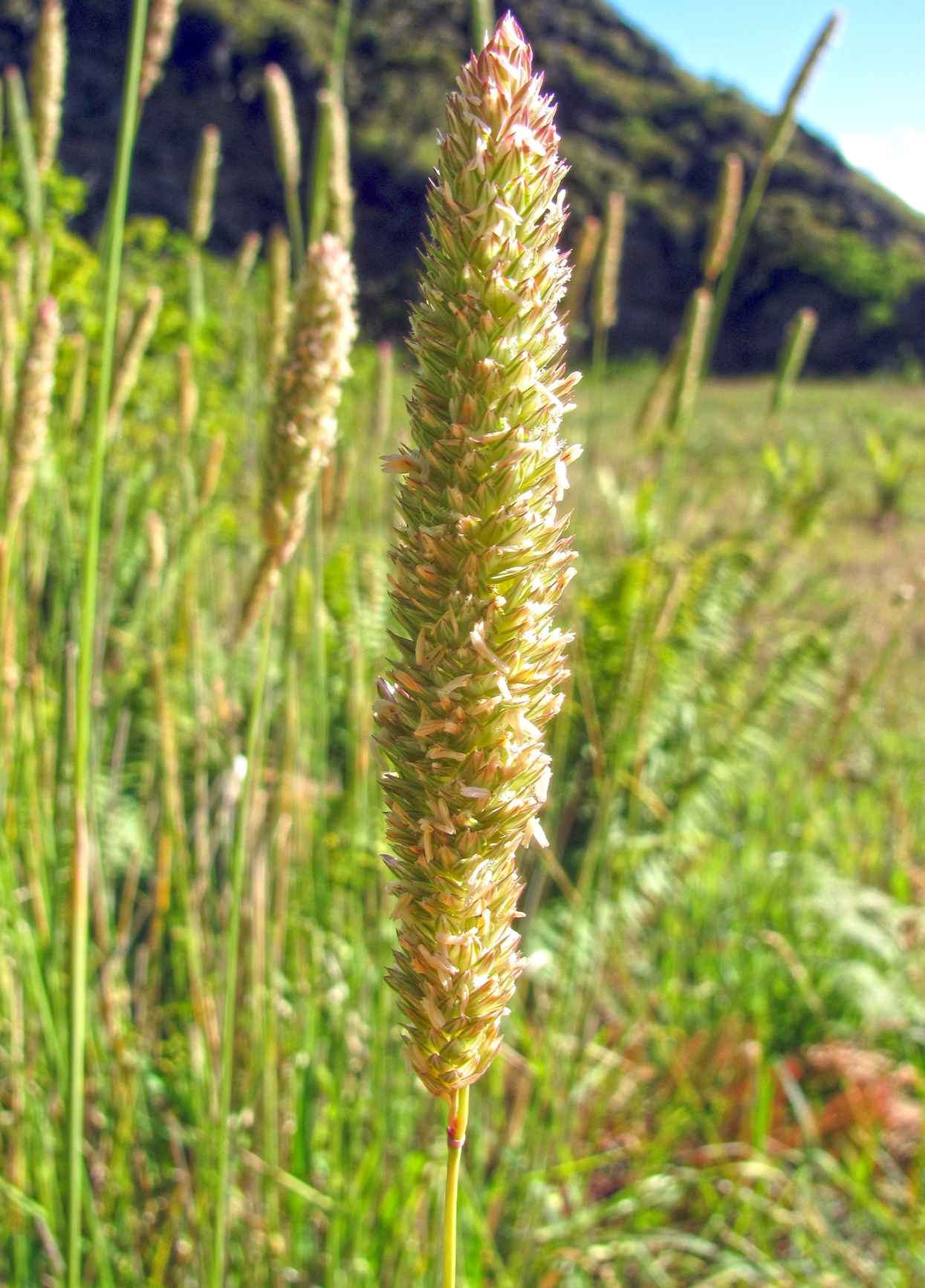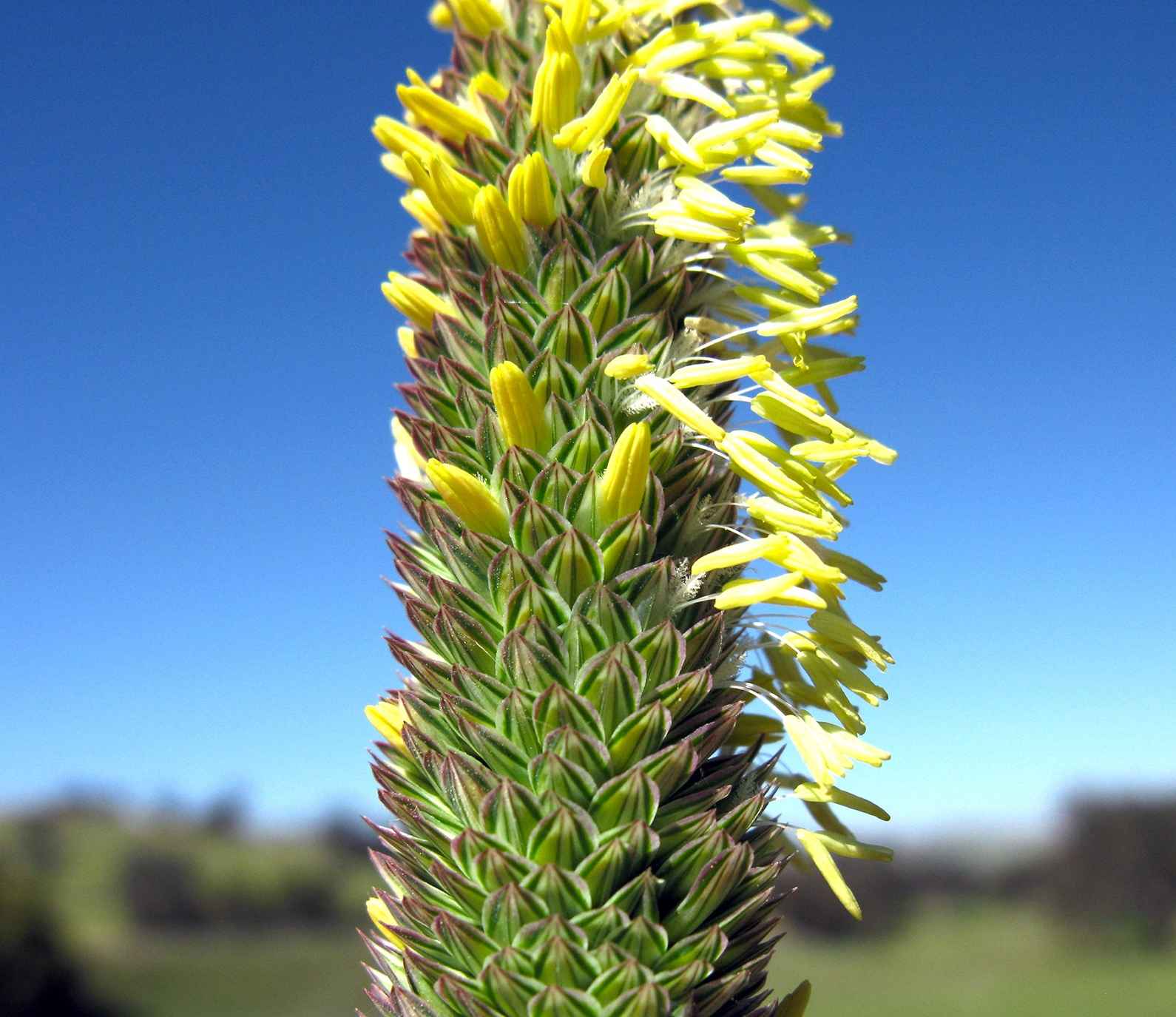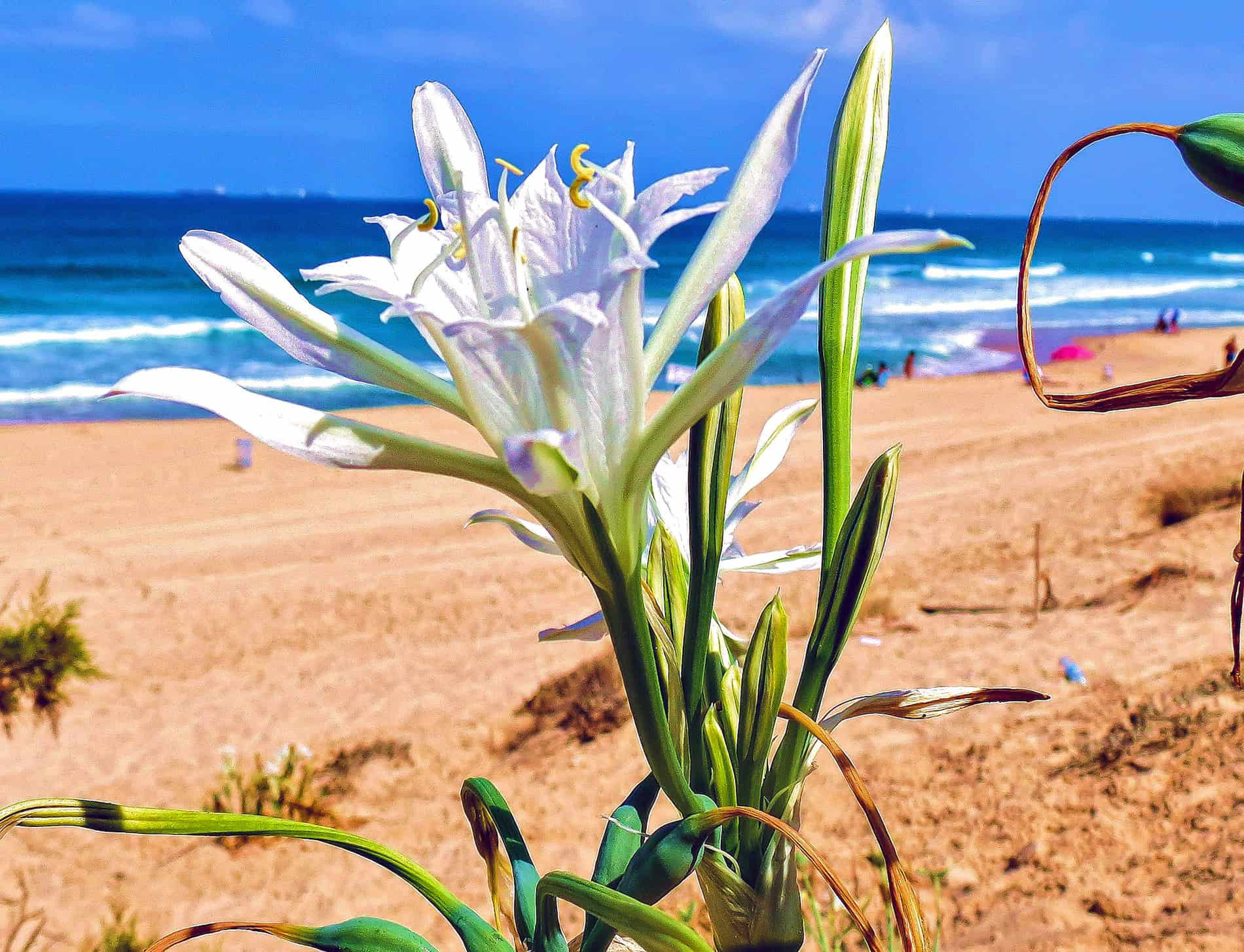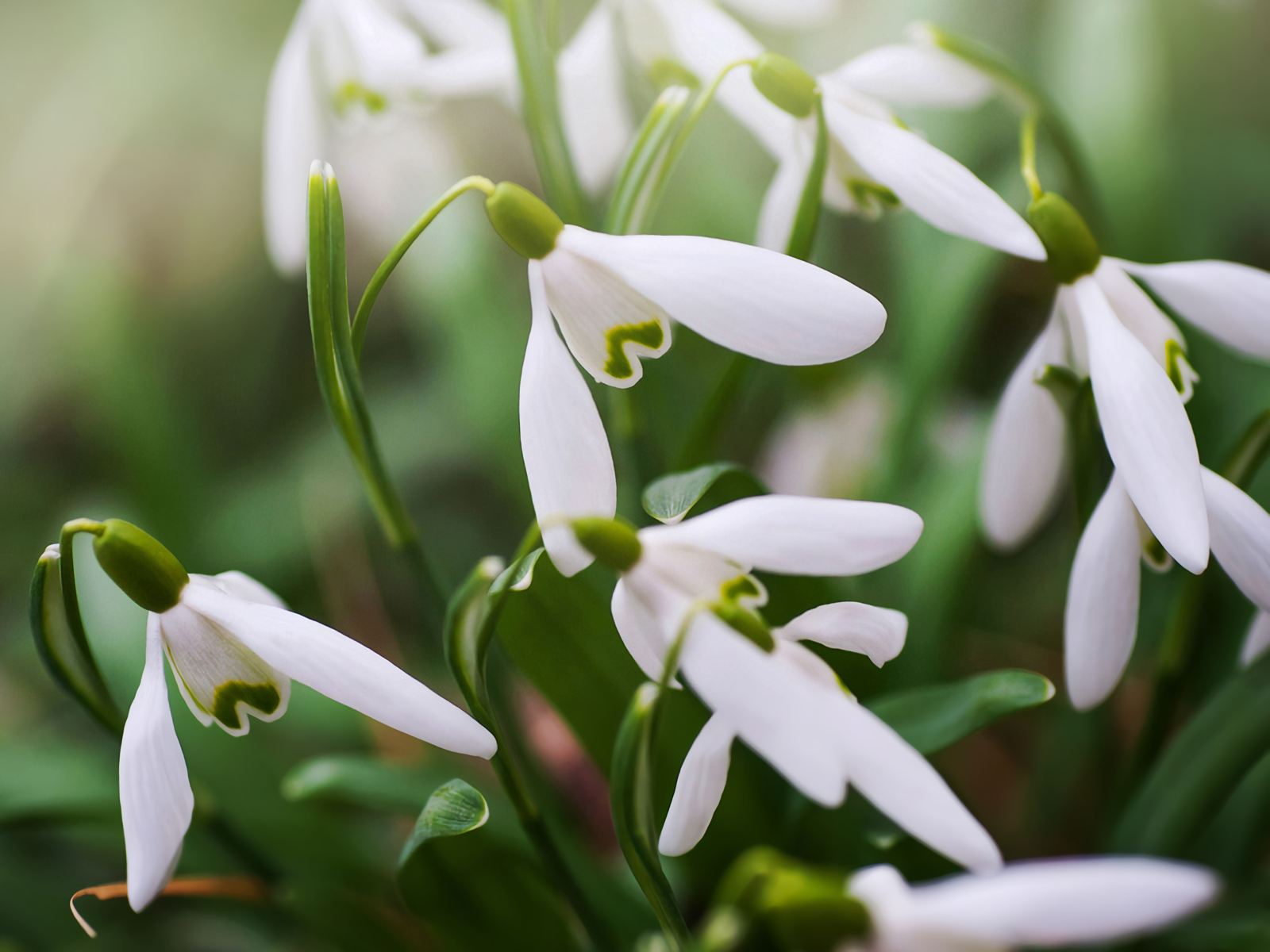Phalaris aquatica is one of the plants of the genus Phalaris (P. tuberosa, P. bulbosa, and P. nodosa) which are referred to as harding grass. Also known as bulbous canary-grass, it is an herbaceous plant belonging to the Poaceae (grasses) family.
Appearance of Phalaris Aquatica
Phalaris aquatica is a strong perennial plant that can grow to be 20–40 inches (50–100 cm) tall and has an upright, cespitose, and typically tuberculate structure. It forms mats, and its bluish-green, hairy leaves have a long blade, a membrane ligule, and no auricles (ear-like projections).

During the vegetative stage, leaves are put at the plant’s base; after it starts to develop ears, they are inserted at the plant’s upper nodes.
Phalaris aquatica has a spiciform (an inflorescence) panicle that is both dense and elongated, with spikelets (an arrangement of flowers) that each contain one hermaphroditic flower and winged, coriaceous glumes that are either toothed or “entire” (not toothed) along their margins.

The plant’s roots are sturdy and far-reaching. It emerges from most of the tillers, and this is actually causing their subsequent death but also leading to regrowth from basal buds. The seed is small and covered by soft, very shiny bracts.
Distribution
Phalaris aquatica, or harding grass, originated in the Mediterranean basin, but now it is cultivated in many other regions that share that climate, including a few in Australia and the USA. It is famously grown in the Ebro valley and the cold southern regions of the Spanish peninsula.

Phalaris aquatica forms storage thickenings (tubers) at the base of its stems or at the lower nodes. This happens after it has bloomed, usually near the conclusion of the growth season.
This ensures the plant’s continued existence even if its vegetative parts perish during the hot summer months. In the fall, new growth emerges mostly from the thicker stems’ axillary buds or, failing that, from the surviving stems.
Life Cycle

The late summer is marked by elongation in these plants. In late spring, the internodes at the base of the stem thicken, and the root system deepens. Once the seeds are mature, the aerial parts are lost, and the tubers remain dormant until the temperature drops. After that, the autumn rains lead to the appearance of the buds.
Resilient to Various Conditions

Although Phalaris aquatica may flourish in a broad range of soil types, it does particularly well in rich, deep loamy to clayey soils. The need for fertilizer becomes apparent when growth is stunted in soils that are both extremely poor and very heavy.
Temperatures of around 70°F (21°C) during the day and 60°F (16°C) during the night are ideal for further growth. Sunlight is essential for optimal development.
Phalaris aquatica can withstand chilly conditions and mild droughts. It can hold its ground against water for extended periods of time. It is tolerant of a broad pH range and has a robust root structure.
What Type of Crop is Phalaris Aquatica?

Growing harding grass, or Phalaris aquatica, helps farmers provide livestock with a nutritious feed source. It is a dryland farming crop that may be cultivated by itself or in combination with legumes (Fabaceae) like alfalfa (on alkaline soils) or subterranean clover (on acid soils).
The usage of Phalaris aquatica is severely limited because of agronomic issues, such as the extreme difficulty of establishing it. The high cost of the seed is related to the low seed output that results from the ease with which the plant’s shell may be removed. While early harvesting may help with this issue, it has the downside of reducing seed vigor.
Preparation
Sowing the seed needs well-prepared soil, a shallow depth of just 0.4 inches (1 cm), and a window of opportunity in early October (in southern Europe) or early spring. Phalaris aquatica grows more rapidly with rain and moderate weather. The green aphids are a real threat to Phalaris aquatica.
In pure form, the sowing dosage in Europe is 9–11 lb/ac (10–12 kg/ha), while in mixtures, it varies between 2.5–5.5 lb/ac (3–6 kg/ha). For the same reason, Ph. aquatica is not co-planted with any other kind of grass.
Due to its tiny seed size (about 35 grains/oz or 1000 grains/g), it takes a long time to get established and is easily choked out by competing plants. It’s not a good idea to use broadcast planting.
Question of Sufficiency

Since grasses can’t grow without nitrogen, it’s best to repair less fertile soil using legumes before planting Phalaris aquatica. It’s common practice to include nitrogen-supplying leguminous plants (like a prolific meadow) with the Ph. aquatica.
Adding a nitrogen supply is known to boost the output of Ph. aquatica by 50–100 percent. Ph. aquatica is also particularly sensitive to a lack of sulfur.
When it Comes to Foraging
While in its vegetative stage, Ph. aquatica yields high-quality feed. Its nutritional value quickly declines during the stem elongation and heading stages, which is why it is recommended to cut it prior to blooming. This supports direct grazing.
Explicit defoliation encourages tillering. To protect fall harvests, it’s best to practice management in the spring that doesn’t include removing exposed basal buds. The initial growth of Ph. aquatica is always slow.
Sluggish Initial Growth
Due to this sluggish initial growth, less intensive and quick grazing rounds are recommended with highly damp soil to eliminate weeds. Phalaris aquatica is already a high-quality grass, and this quality is further ensured by brief grazing.
Although it may be slow to get going at first, once it does, Ph. aquatica maintains its wonderful conduct throughout the cooler months (autumn to spring). Cattle, in particular, think Ph. aquatica is great.
This plant is an excellent option for dryland pastures in arid regions due to its year-round growth, with the exception of the summer months. Its resurgence in the fall before other grasses is known as an advantage that ensures some level of output reliability even in drought years.
Yields
Ph. aquatica with high alkaloids is of poor quality because it reduces the forage’s palatability and digestibility and may cause behavioral and neurological problems in animals who eat it voluntarily. With the addition of nitrogenous fertilizer, forage yields can be enhanced from the typical 2.5–3.5 tons of dry matter per acres (6–8 t/ha) to 4–5 tons (10-12 t/ha).
Phalaris aquatica usually gives two harvests, the first at the end of August and the second in September. This plant has an energy value of 2.3 and 2.1 Mcal/kgDM during the winter and spring seasons, respectively.
Natural hybrids, such as the offspring of the Phalaris tuberosa and Phalaris arundinacea crosses, provide animals living at elevations exceeding 7,500 feet (2,300 m) above sea level with the opportunity to grow at a faster rate.
Two tons of dry matter per acre (5t/ha) can be harvested after each cut, and a total of three dry harvests are possible with Phalaris aquatica. It can withstand the cold, has a high nutritional content, and can be used as hay or silage, making it ideal for many regions.
Toxicity of Phalaris Aquatica
Harding grass or Phalaris aquatica’s high alkaloid content makes it poisonous to animals and can lead to central nervous system diseases like “phalaris staggers.” The forage’s acceptability, digestion, and consumption depend on these characteristics. Low light, dense planting, nitrogen-rich soil, and warm temperatures are all conducive to the production of this alkaloid in Ph. aquatica.
Phalaris Aquatica Varieties
Many popular commercial Ph. aquatica crops have their roots in Australia. While Australian phalaris benefit from better drought resistance and a shorter dormancy period, Seedmaster phalaris can have more shatter resistance and yield greater seed production.
There are also newer varieties of Ph. aquatica, including the Sirocco, Sirolan, and Sirosa Phalaris. They have been handpicked from a pool of resources amassed in Morocco. Because of the size of their seeds and young plants, they may establish themselves quicker than other varieties. The Sirosa and Sirolan variants have lower alkaloid levels and show greater resilience to summer dryness than the Australian type.
Taxonomy
In Centuria I. Plantarum written in Latin, Carl Linnaeus described and named Phalaris aquatica in 1755.
Cytology
Harding grass or Phalaris aquatica (Fam. Poaceae or Gramineae) and related infraspecific taxons have n = 14 chromosomes.
Etymology
The genus name “phalaris” may have been taken from the Greek word “phalaros,” which means “lustrous” or “glossy,” in reference to the ears’ (spikes’) reflective quality. The Latin species name “aquatica” means “aquatic” in English.
Synonymity
- Phalaris aquatica Delile ex Boiss.
- Phalaris avicularis Salisb.
- Phalaris ovata Moench
- Phalaris altissima Menezes
- Phalaris arundinacea subsp. bulbosa Paunero
- Phalaris bulbosa Ten.
- Phalaris elongata Braun-Blanq.
- Phalaris hirtiglumis (Batt. & Trab.) Baldini
- Phalaris nodosa L.
- Phalaris stenoptera Hack.
- Phalaris trabutiana Maire
- Phalaris tuberosa L.






